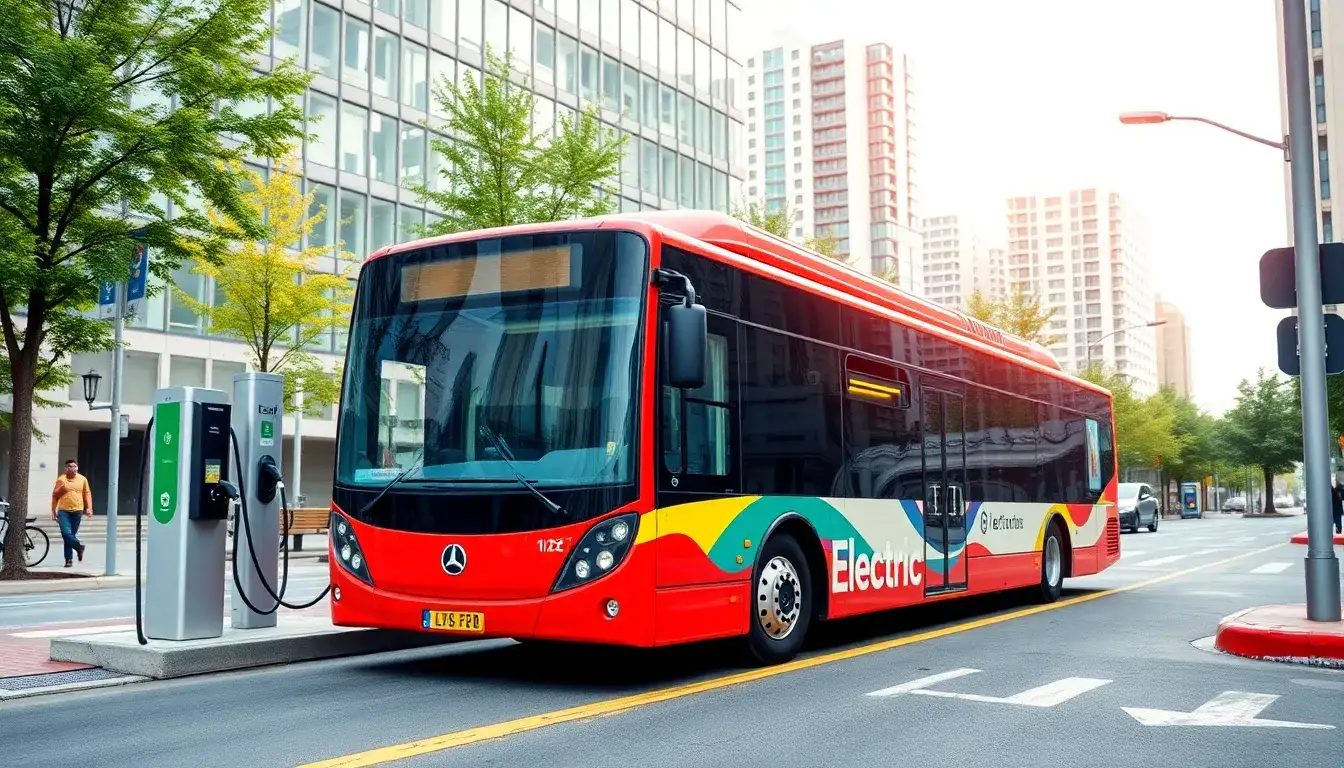
Standards for the “Subsidy for Electric Bus Updates” in Urban Public Transport have been released, with an average subsidy of 80,000 yuan per vehicle.
On March 19, 2025, the Ministry of Transport, the National Development and Reform Commission, and the Ministry of Finance announced the “Implementation Rules for the New Energy Urban Bus and Power Battery Update Subsidy in 2025” (hereinafter referred to as the “2025 Implementation Rules”). These rules include hydrogen fuel cell vehicles within the support scope, reflecting the government’s commitment to diverse clean energy technologies and further promoting green transformation in the transportation sector.
The government will utilize funds from long-term special treasury bonds to provide fixed subsidies to urban public transport companies that update their new energy buses and replace power batteries. Each vehicle will receive an average subsidy of 80,000 yuan. Specifically, vehicles that replace power batteries will receive an average subsidy of 42,000 yuan each. Local authorities may determine the subsidy standards for updating new energy urban buses based on the demand and proportion of replaced vehicles and batteries.
Updating new energy urban buses refers to the scrapping of old buses and the purchase of new energy urban buses listed in the directories for tax exemptions and promotions. These include pure electric, plug-in hybrid, and hydrogen fuel cell vehicles. The registration certificate of newly purchased buses must indicate “public passenger transport,” and passenger cars are not eligible for support. Replacing power batteries refers to the complete replacement of the power battery in new energy urban buses.
The “2025 Implementation Rules” specify that subsidy funds will support buses that are 8 years or older, meaning those registered before December 31, 2017. It also covers the replacement of power batteries for new energy urban buses that exceed their warranty period or do not meet safety operation conditions by December 31, 2025. Local authorities can prioritize scrapping old new energy buses and may also scrap buses powered by other fuel types when updating to new energy buses, based on funding and demand.
Industry experts informed reporters that in July 2024, the Ministry of Transport and the Ministry of Finance issued the “Implementation Rules for the Update Subsidy of New Energy Urban Buses and Power Batteries” (hereinafter referred to as the “2024 Implementation Rules”). In September of the same year, a supplementary notification was issued to further support the update of new energy buses and power batteries.
Experts indicated that the “2025 Implementation Rules” directly respond to the requirements outlined in the “Notice of the State Council on the Issuance of the Action Plan for Promoting Large-Scale Equipment Updates and Replacement of Consumer Goods.” The fiscal subsidies aim to accelerate the elimination of outdated equipment and promote the large-scale update of new energy buses. Compared to the “2024 Implementation Rules,” the new guidelines place greater emphasis on execution flexibility, safety compliance, and regional balance, while also addressing transitional issues through supplementary notifications and strengthening regulatory measures.
For instance, the “2025 Implementation Rules” specify that funding will come from “long-term special treasury bonds,” which increases the subsidy amount. The age limit for vehicles has been relaxed to those registered before December 31, 2017, thus covering more old vehicles. The guidelines also encourage the replacement of low-floor and low-entry new energy buses, providing preferential arrangements in subsidy funding.
Both the “2025 Implementation Rules” and the “2024 Implementation Rules” stipulate that central and local finances will share the burden at a ratio of 90:10, with specific ratios determined by region: 85:15 for eastern provinces, 90:10 for central provinces, and 95:5 for western provinces, reflecting regional differentiated support. Additionally, the “2025 Implementation Rules” mandate that local regulatory bureaus conduct random checks on subsidy funds and emphasize the regulation of collusion and price gouging.
Experts assert that promoting new energy buses is a critical measure for achieving the goals of “carbon peaking and carbon neutrality.” The inclusion of hydrogen fuel cell vehicles in the “2025 Implementation Rules” underscores the government’s support for diverse clean energy technologies and further advances the green transformation of the transportation sector.
According to data released by the China Automotive Power Battery Industry Innovation Alliance in January, the cumulative sales of power batteries and other batteries in China reached 1,039.5 GWh in 2024, marking a year-on-year increase of 42.4%. Of this, power battery sales accounted for 791.3 GWh (76.1% of total sales), with a year-on-year growth of 28.4%; other batteries totaled 248.2 GWh (23.9% of total sales), showing a remarkable increase of 118.8%. Currently, the national power battery production capacity has surpassed 1,800 GWh, and the subsidy policy is expected to effectively address excess capacity and optimize resource allocation.
During the national two sessions in 2025, several representatives suggested establishing a warning mechanism for the application of power batteries in new energy buses, focusing on supporting the planning and layout of electric bus infrastructure. They also called for the introduction of specific regulations and standards to improve the recycling and utilization system for power batteries, fostering a green circular economy within the industry.
Many representatives from bus companies expressed the need to promote upgrades in power battery technology to enhance range, reduce charging times, and improve supporting infrastructure to alleviate range anxiety regarding new energy buses.







